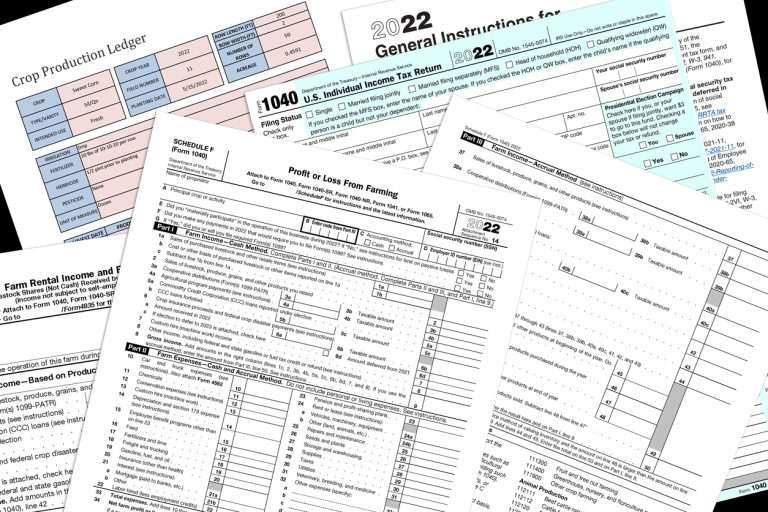As the year draws to a close, retirees have a unique opportunity to optimize their financial strategy by making tax-efficient moves that preserve retirement savings and maximize after-tax income while minimizing the amount of taxes. Thoughtful year-end financial planning not only minimizes tax liabilities but also ensures long-term financial security. In this comprehensive guide, we explore the most effective year-end strategies for retirees to optimize their retirement income, claim Social Security at full retirement age, minimize taxes, and safeguard their financial future.
Why Year-End Tax Planning is Crucial for Retirees
Year-end tax planning plays a pivotal role in retirement planning by:
Reducing Tax Liabilities: Strategic withdrawals and deductions lower taxable income.
Preserving Retirement Savings: Effective tax management enhances retirement security.
Avoiding Penalties: Timely actions, such as taking Required Minimum Distributions (RMDs), help retirees avoid IRS penalties.
Maximizing After-Tax Income: Tax-efficient retirement strategies ensure a balanced and optimized income stream.
By strategically managing tax implications, retirees can maintain financial independence and maximize the longevity of their retirement savings.
Required Minimum Distributions (RMDs): Avoiding Penalties and Maximizing Income
Retirees aged 73 and older are required to take RMDs from tax-deferred accounts, including Traditional IRAs, 401(k)s, and SEP IRAs. Failing to take the required amount results in a hefty 25% penalty on the amount not withdrawn.
Strategies to Maximize Tax Efficiency:
Timing Withdrawals: Consider taking withdrawals earlier in the year if markets are favorable or wait until the end of the year to allow investments to grow.
Combine RMDs: Consolidate multiple accounts to simplify RMD calculations and avoid over or under-withdrawals.
Charitable Giving: Use Qualified Charitable Distributions (QCDs) to satisfy RMD requirements while reducing taxable income.
Tax-Efficient Tip: Use RMDs to cover living expenses, reducing the need to withdraw from other taxable accounts.

Qualified Charitable Distributions (QCDs): A Tax-Efficient Way to Give
A Qualified Charitable Distribution (QCD) allows retirees aged 70½ and older to donate up to $100,000 directly from their IRA to a qualified charity. QCDs count towards RMDs but are excluded from taxable income, making them an excellent strategy for charitable retirees.
Benefits of QCDs:
Lower Taxable Income: QCDs reduce adjusted gross income (AGI), potentially minimizing the taxability of Social Security benefits.
Maximize Deductions: Ideal for retirees who no longer itemize deductions due to the increased standard deduction.
Support Charitable Causes: Make impactful donations while benefiting from significant tax savings.
Tax-Efficient Tip: Plan charitable donations strategically by using QCDs to fulfill RMD requirements without increasing taxable income.
Roth Conversions: Tax-Free Growth and Future Savings
A Roth IRA conversion involves transferring funds from a Traditional IRA or 401(k) into a Roth IRA. While the converted amount is taxable in the year of conversion, future growth and withdrawals are tax-free.
Advantages of Roth Conversions:
Tax-Free Withdrawals: Qualified distributions from Roth IRAs are tax-free in retirement, reducing future tax burdens.
No RMDs: Roth IRAs are exempt from RMDs, allowing for continued tax-free growth.
Tax Diversification: Having a mix of taxable, tax-deferred, and tax-free accounts provides flexibility in managing retirement income.
When to Consider a Roth Conversion:
Low-Income Years: Convert during low-income years to minimize the tax impact.
Market Downturns: Convert during market declines to capitalize on future tax-free growth.
Tax Bracket Management: Convert amounts that fill up lower tax brackets without pushing income into a higher bracket.
Tax-Efficient Tip: Implement partial Roth conversions over several years to spread out tax liabilities while optimizing long-term savings.
Tax-Loss Harvesting: Minimizing Capital Gains Tax
Tax-loss harvesting involves selling underperforming investments to offset capital gains and reduce taxable income. It’s an effective year-end strategy for retirees looking to optimize their tax liability.
Key Benefits:
Offset Capital Gains: Use realized losses to offset gains from profitable investments.
Reduce Taxable Income: If losses exceed gains, up to $3,000 can be deducted from ordinary income annually.
Carryover Losses: Unused losses can be carried forward to future tax years.
How to Implement:
Review Investment Portfolio: Identify underperforming assets to sell by year-end.
Reinvest Strategically: Avoid the wash-sale rule by not repurchasing the same or substantially identical securities within 30 days.
Tax-Efficient Tip: Harvest losses strategically to maximize tax savings while maintaining a balanced and diversified portfolio.

Maximizing Deductions and Credits
Year-end is the ideal time to maximize itemized deductions and take advantage of available tax credits:
Medical Expense Deductions: Deduct qualified medical expenses exceeding 7.5% of AGI. Consider prepaying for elective procedures or prescription medications before year-end.
Charitable Contributions: Bunch donations to maximize itemized deductions. Consider donor-advised funds for flexible charitable giving.
State and Local Taxes (SALT): Prepay property taxes or state income taxes, subject to the $10,000 SALT cap.
Tax-Efficient Tip: Alternate between itemizing and taking the standard deduction each year to maximize tax savings.
Reviewing and Updating Estate Planning Documents
Year-end is an excellent time to review and update estate planning documents, including:
Wills and Trusts: Ensure they reflect current wishes and beneficiary designations.
Beneficiary Designations: Update beneficiaries on retirement accounts, life insurance policies, and annuities.
Gifting Strategies: Take advantage of the annual gift tax exclusion ($17,000 per individual) to reduce estate taxes.
Tax-Efficient Tip: Implement gifting strategies to minimize estate taxes and maximize wealth transfer to heirs.
Maximizing Health Savings Accounts (HSAs)
HSAs are powerful tools for tax-efficient retirement planning, offering triple tax benefits:
Tax-Deductible Contributions: Contributions reduce taxable income.
Tax-Free Growth: Investments within the HSA grow tax-free.
Tax-Free Withdrawals: Withdrawals for qualified medical expenses are tax-free.
Strategies for Retirees:
Max Out Contributions: Maximize HSA contributions before year-end to maximize tax deductions.
Delay Reimbursements: Pay out-of-pocket for medical expenses, allowing HSA funds to grow tax-free.
Qualified Medical Expenses: Use HSA funds for Medicare premiums, long-term care insurance, and other healthcare costs.
Tax-Efficient Tip: HSAs are a strategic way to fund healthcare costs in retirement while minimizing taxable withdrawals from other accounts.
Secure Financial Independence with Year-End Tax Moves
Maximizing tax efficiency through year-end financial moves ensures a secure and comfortable retirement. By strategically managing RMDs, leveraging Roth conversions, harvesting capital gains and losses, maximizing itemized deductions, and utilizing HSAs, retirees can enhance after-tax income and preserve retirement savings.
Goldstone Financial Group is dedicated to helping retirees navigate complex tax regulations and optimize retirement income. Schedule a consultation today to develop a customized year-end tax strategy tailored to your financial goals.



